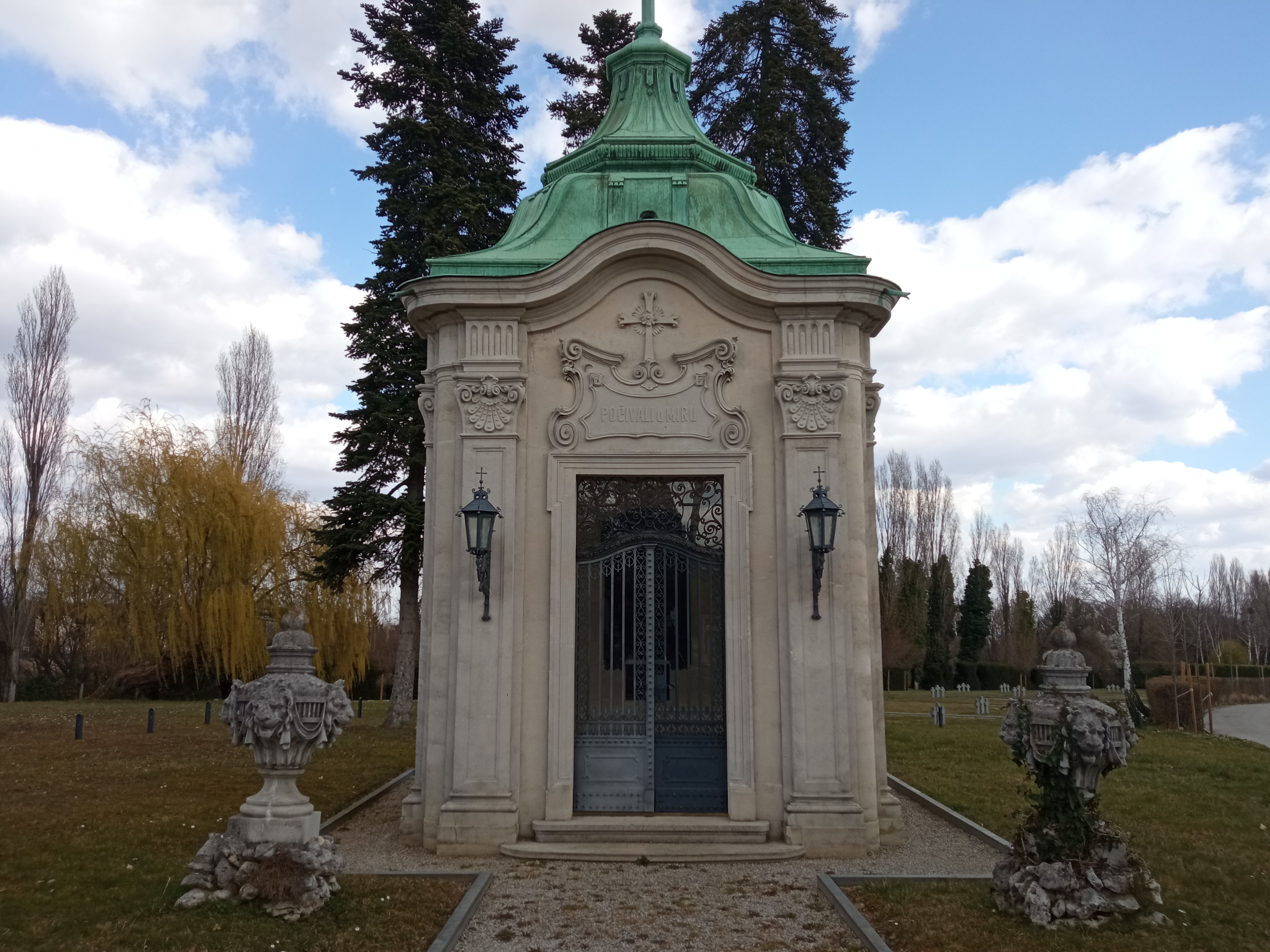Eternal Beauty of Mirogoj
In the very last days of October, and especially on 1st November, this is not even a recommendation anymore. It’s a must. Take this advice as an order: just go, and thank me later.
It’s a custom to light a candle when you visit a grave.
No matter how much we recommend the visit to the cemetery, it feels a bit off the beaten path. Since Zagreb has an image of a walkable city, if you have to take a bus to get somewhere, it feels so out of reach. But don't let the bus discourage you! The cemetery is just several bus stops away, and the bus is just next to the centrally located cathedral. It couldn’t be easier to get there by public transport.
One of the beautiful monuments. Mirogoj is a true art gallery.
 The cemetery is harmonious as a whole, although it contains dozens of distinctive graves and mausoleums.
The cemetery is harmonious as a whole, although it contains dozens of distinctive graves and mausoleums.
The cemetery was built back in 1876 to replace all the smaller cemeteries that were being in the way of further expansion of the city. This brings us to an awkward fact. Do you know that, in nowadays city center, there used to be as many as 20 smaller cemeteries? Some of them haven’t even been completely exhumed. Some of the most important historical sights: the area around the cathedral, the square in front of the St Mark’s Church, the vivid Cvjetni/Flower square - all of them were locations of cemeteries.
Mirogoj has always been an eternal home to all the religions. This is the Russian chapel at Mirogoj.
Do you know that a lot of Zagrebers were born right above an old cemetery? Two big hospitals, where women come to deliver their babies, were built directly on the surface of a former cemetery? In one of the previous articles, I wrote about the origin of the name of the city. One of the theories is that the name of the city means Za - grebom, behind or beyond a grave.
Notice the glorious cemetery arcades in the back.
If you are intrigued by such history, I have some good news for you. The remains of one of those cemeteries are still in the narrow city center. Take a walk through Jurjevska street and enter the gate in front of a small church. The area around the church hides eerie remains of the old St George’s cemetery. It was in use for centuries. It was officially closed in the 1800s, together with all the other graveyards of the old town.
Massive church incorporated into the walls of Mirogoj
But let's go back to Mirogoj, the main cemetery. Compared to the size of the very city back then, Mirogoj seems like such a progressive, forward-thinking, futuristic project. It sure earned its nickname City of the dead. Mirogoj is included in the European Cemeteries Route and is a member of the European Association of Significant Cemeteries. You could help yourself explore it by installing the ARTour app. That app could come in handy as you visit other towns in Croatia because Zagreb is not the only one with a significant cemetery.
Thousands of candles around the Central cross at All Saints’ Day
We are approaching the first day of November, All Saints’ Day. In Croatia, that day is a national holiday. It’s customary to visit the graves of your beloved ones, bring flowers and light a candle. It's always a good time to visit Mirogoj. But, on 1st November, it's a must. Why don’t you come along?
Video about Zagreb cemeteries by Andrea Pisac in collaboration with Zagreb Tourism Board. Easter egg alert: try and spot me in the video!
Photos by: Iva Silla
Author: Iva Silla
